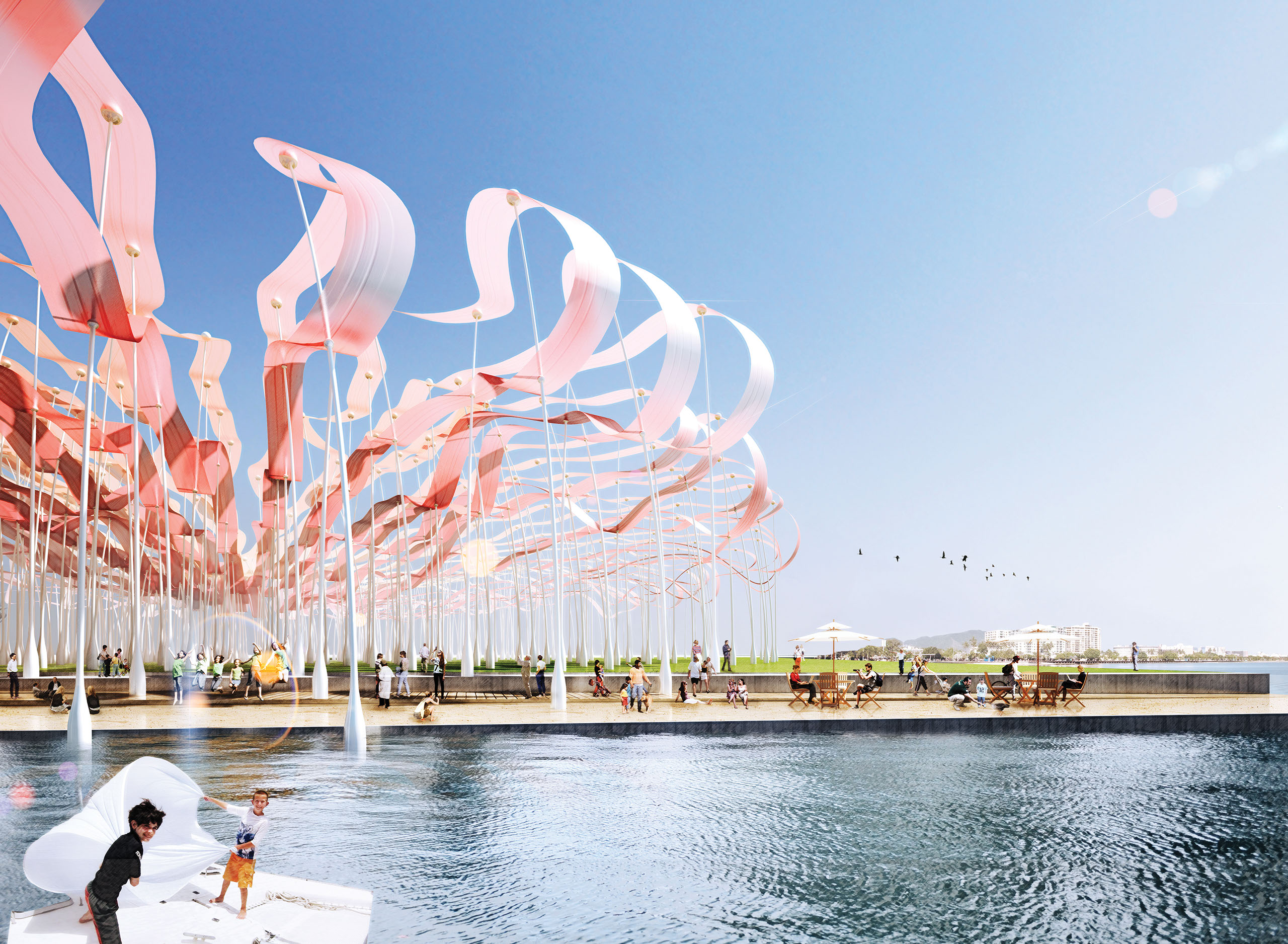
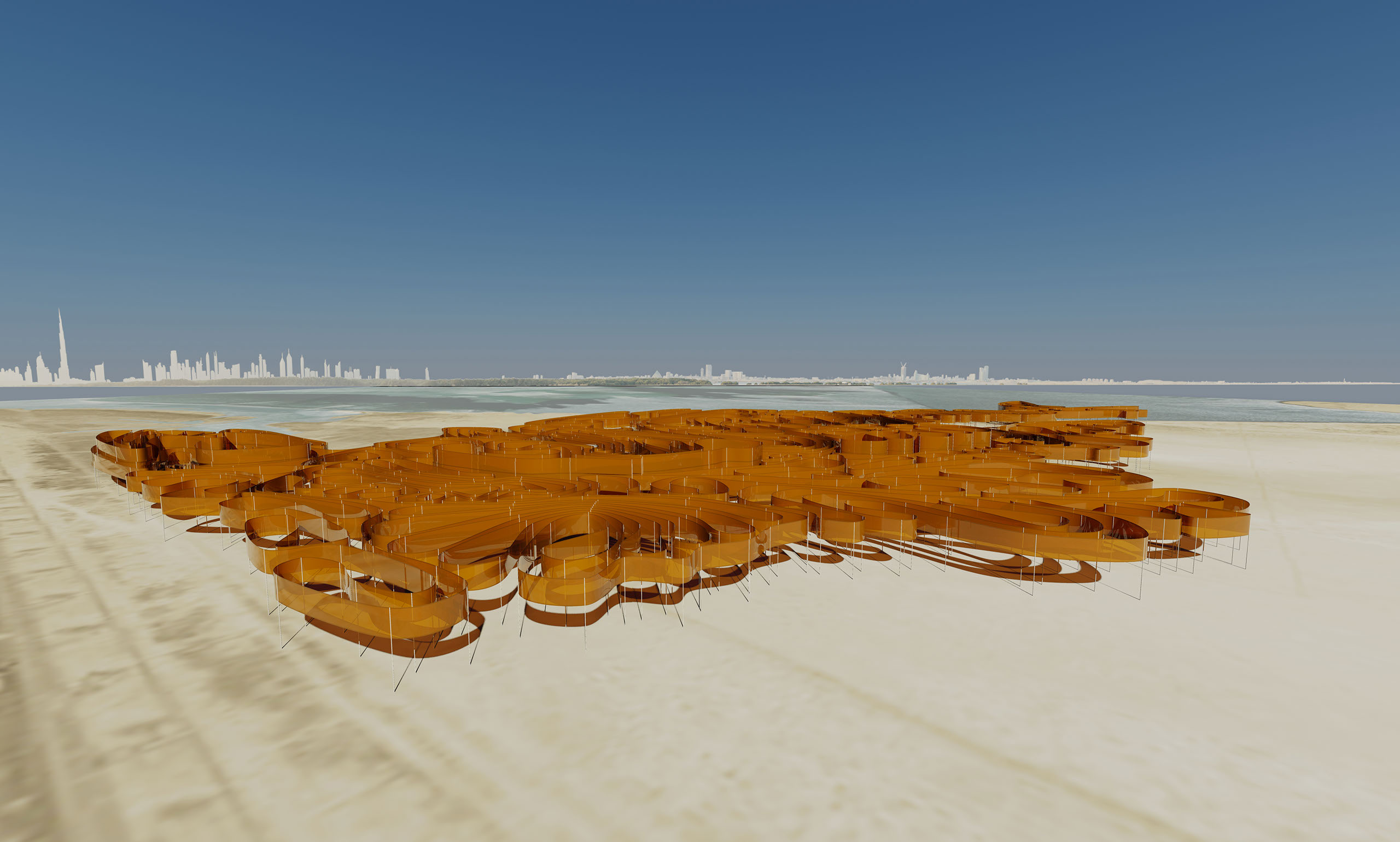
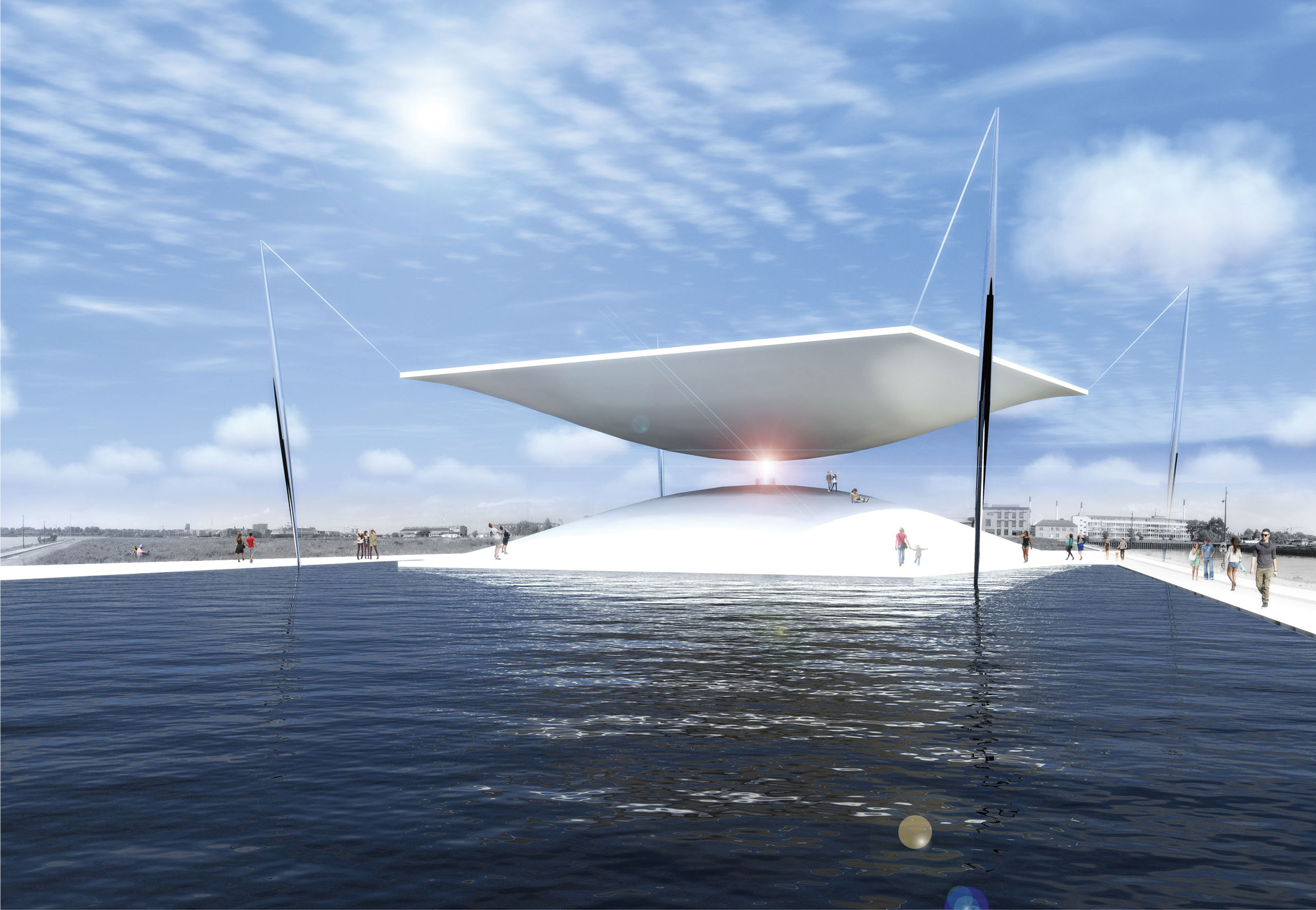
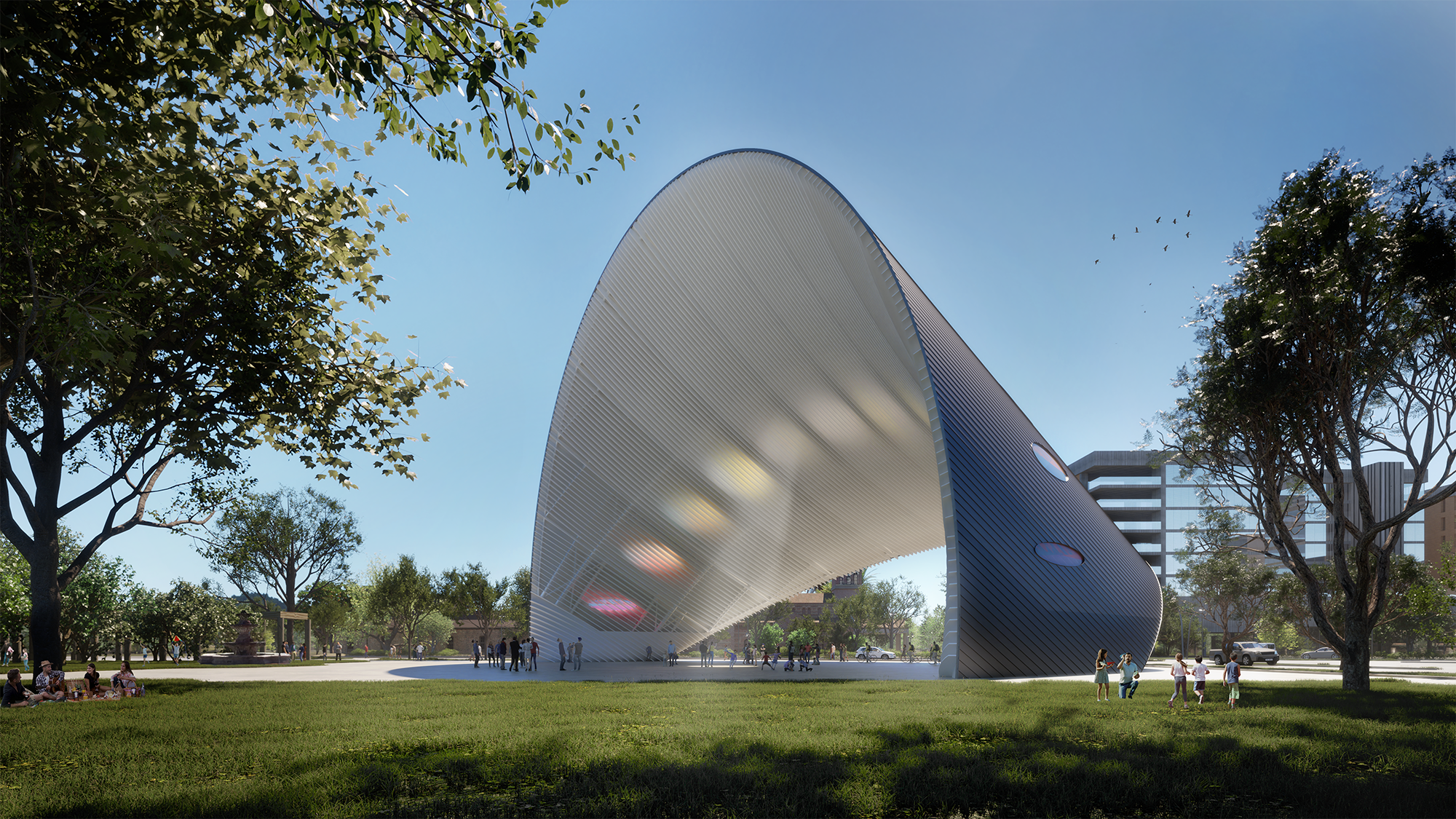
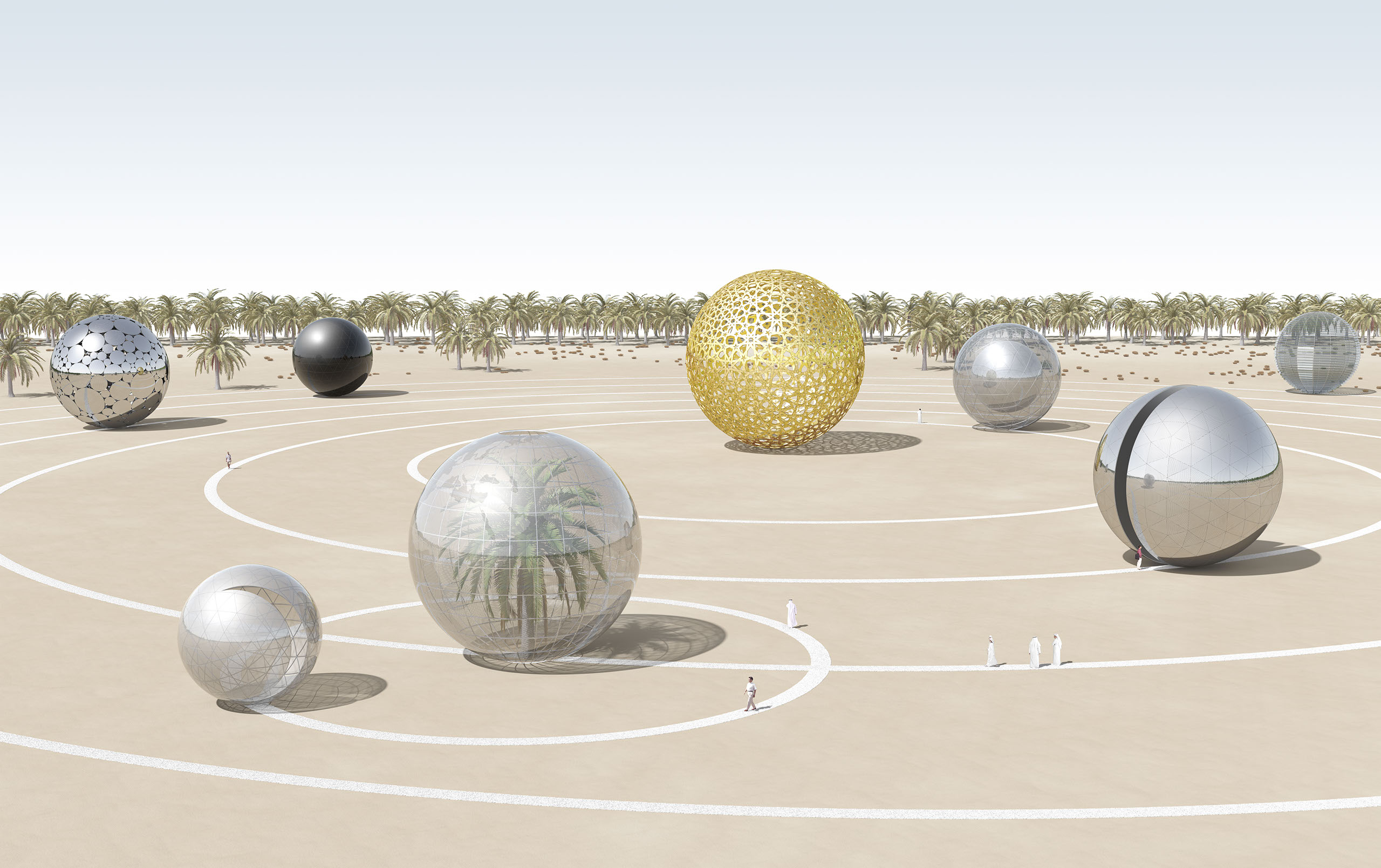
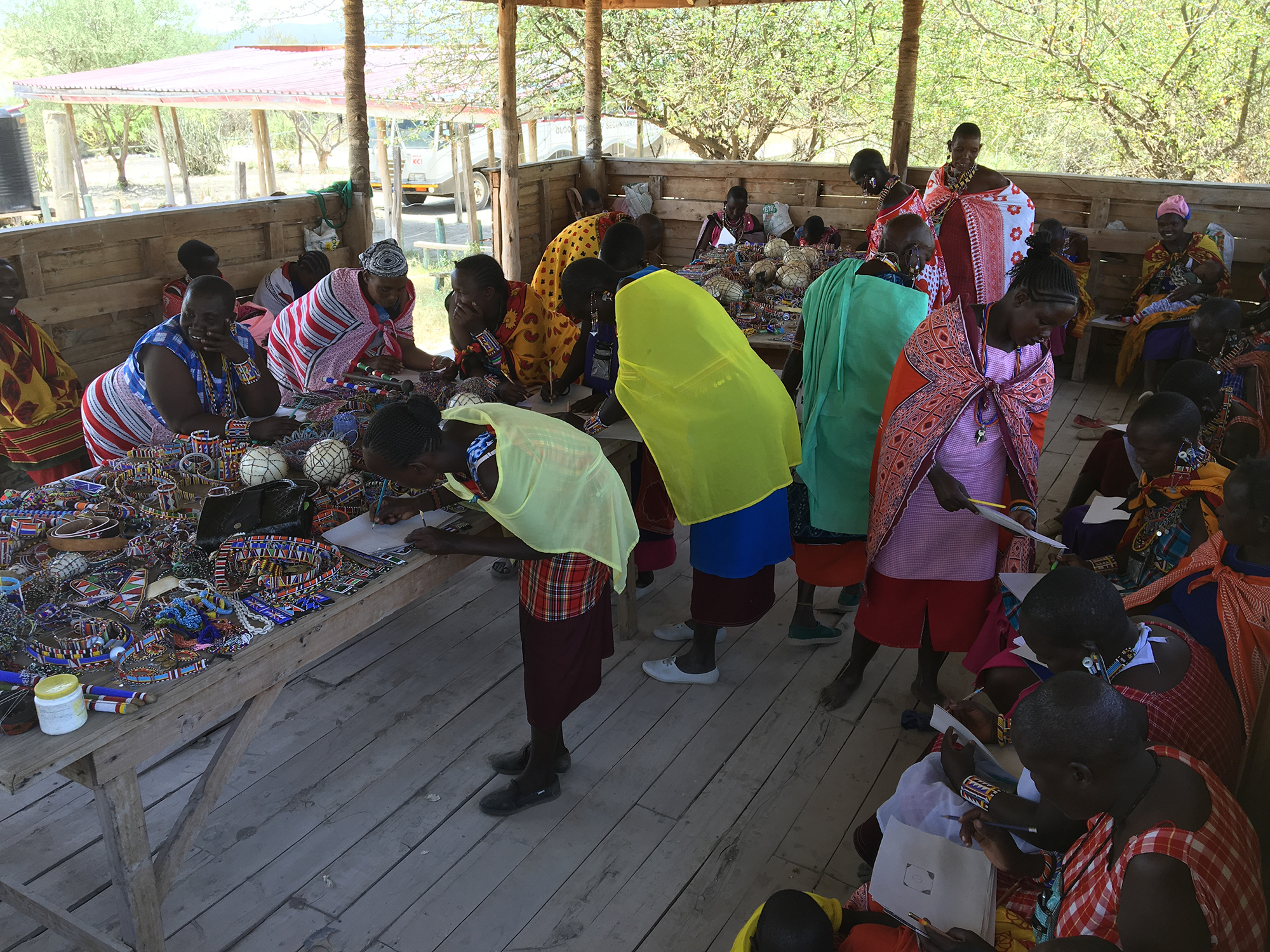
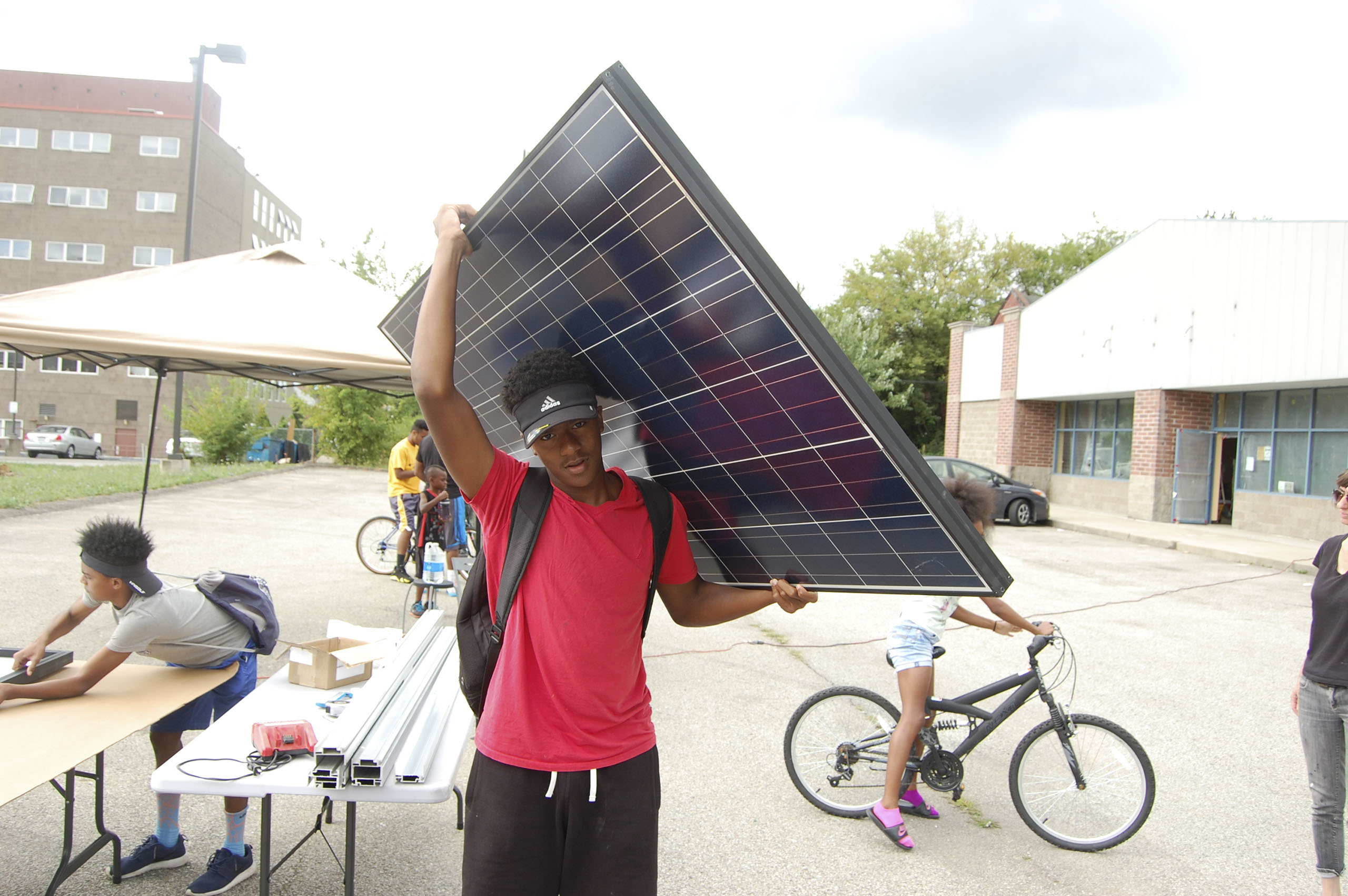
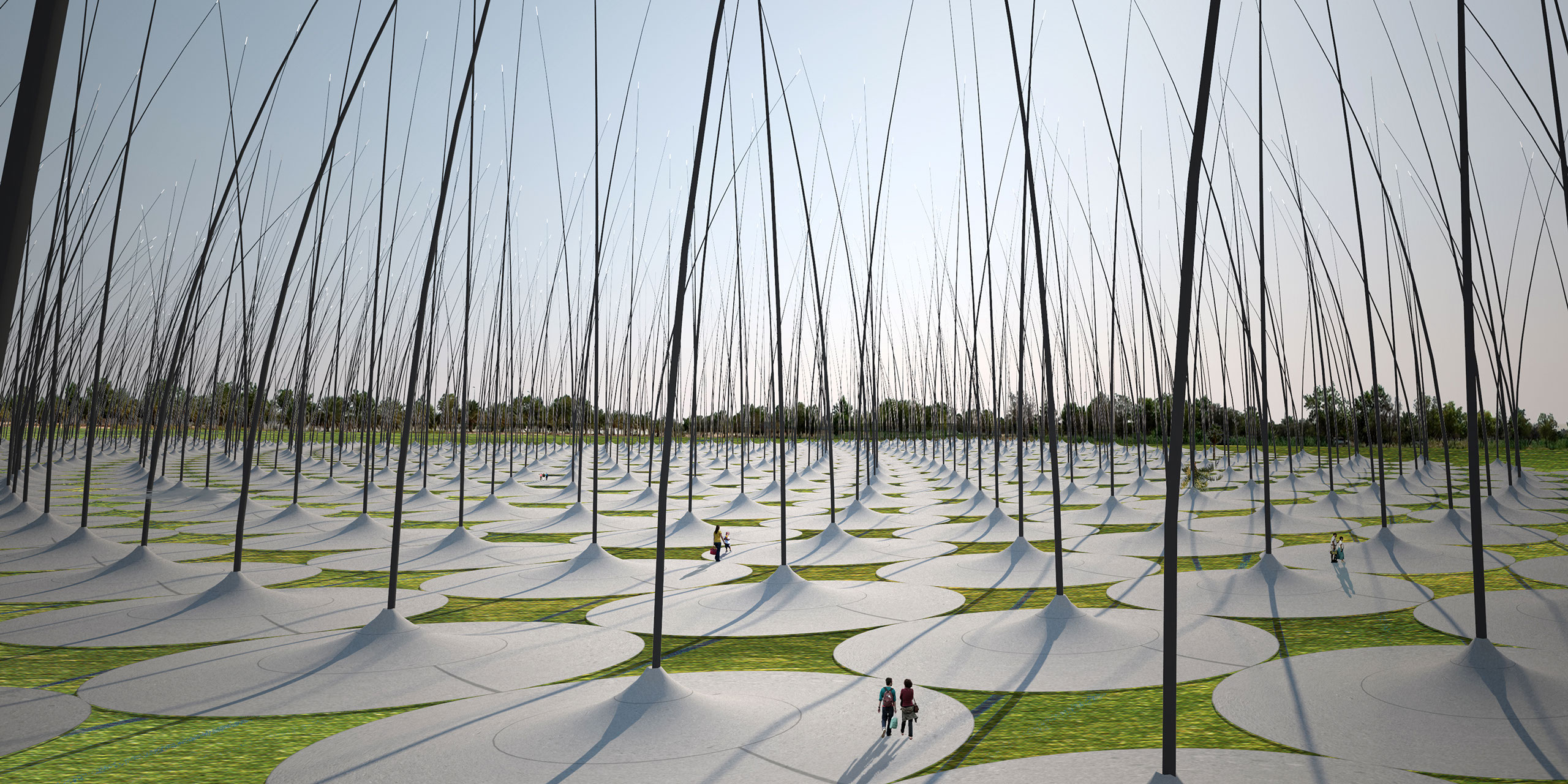


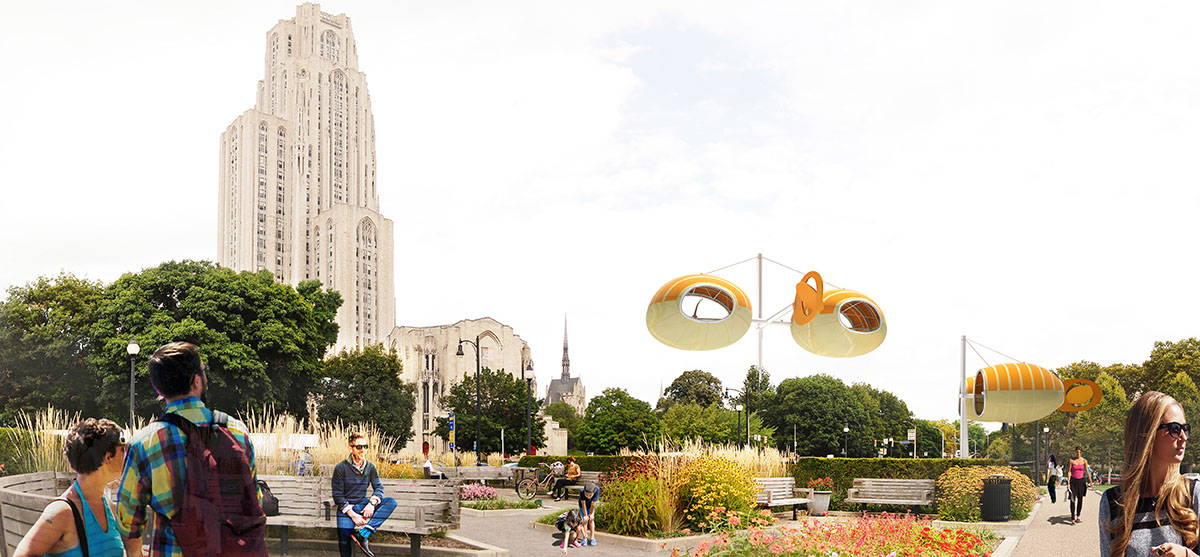
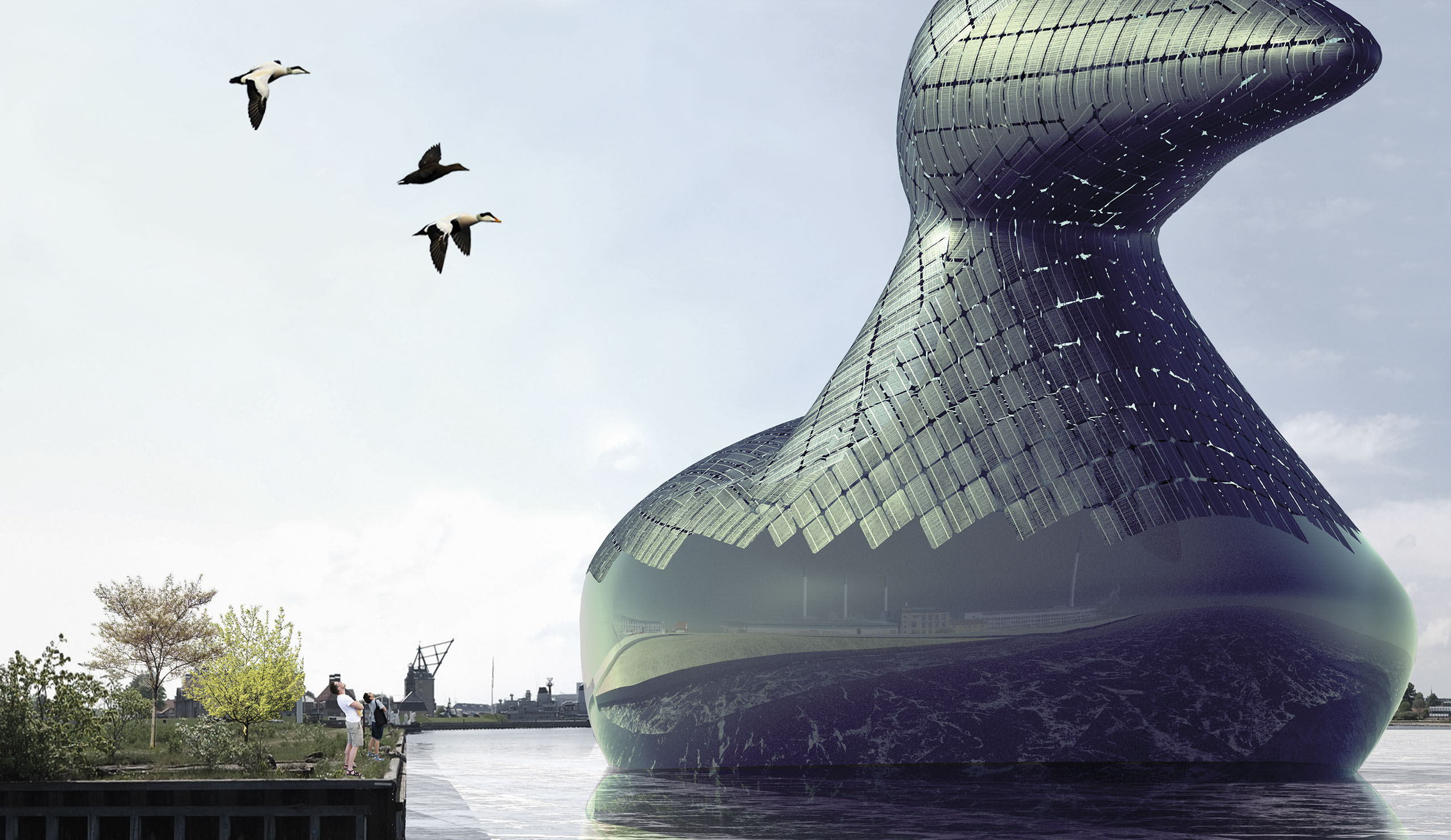
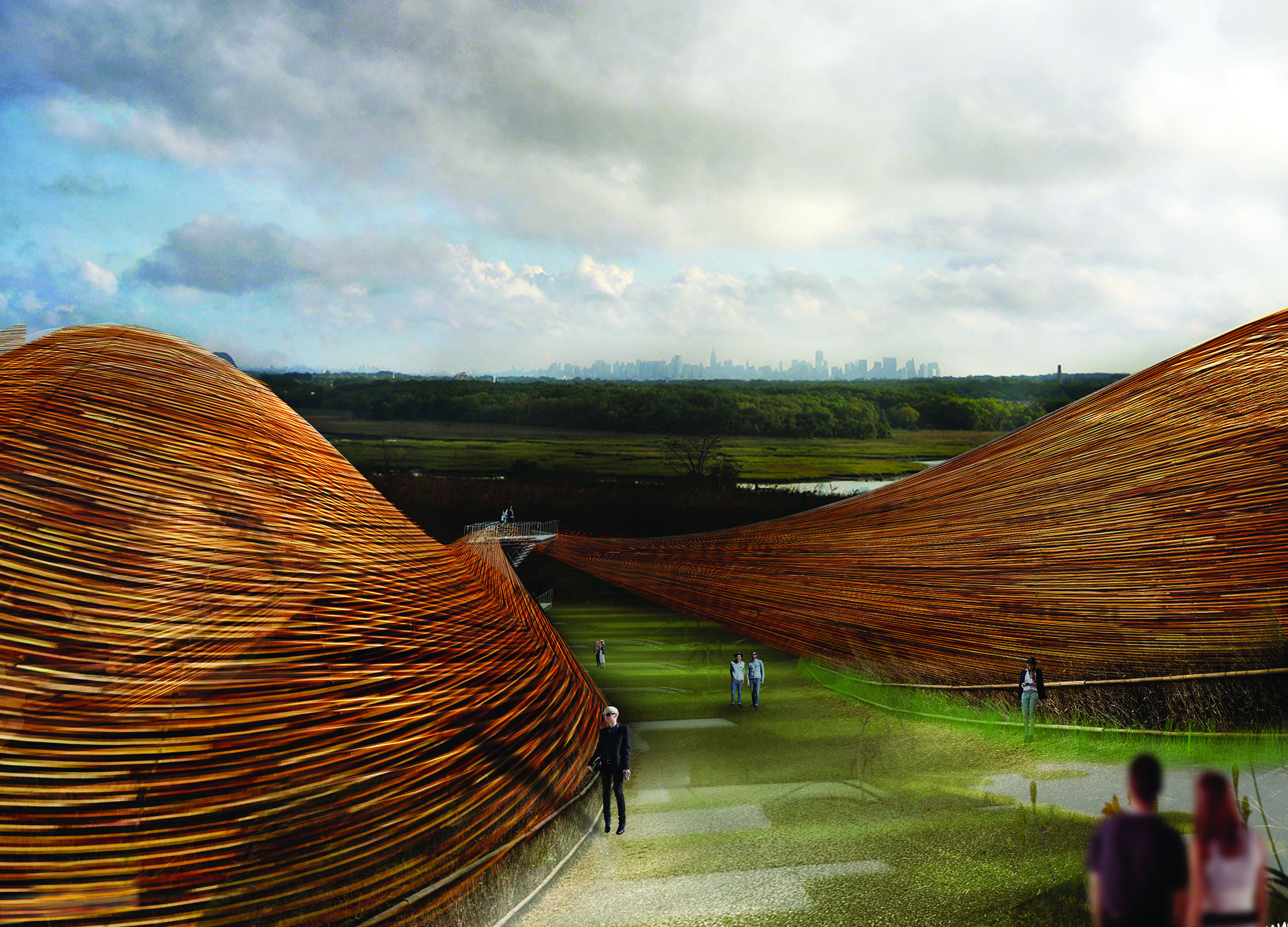
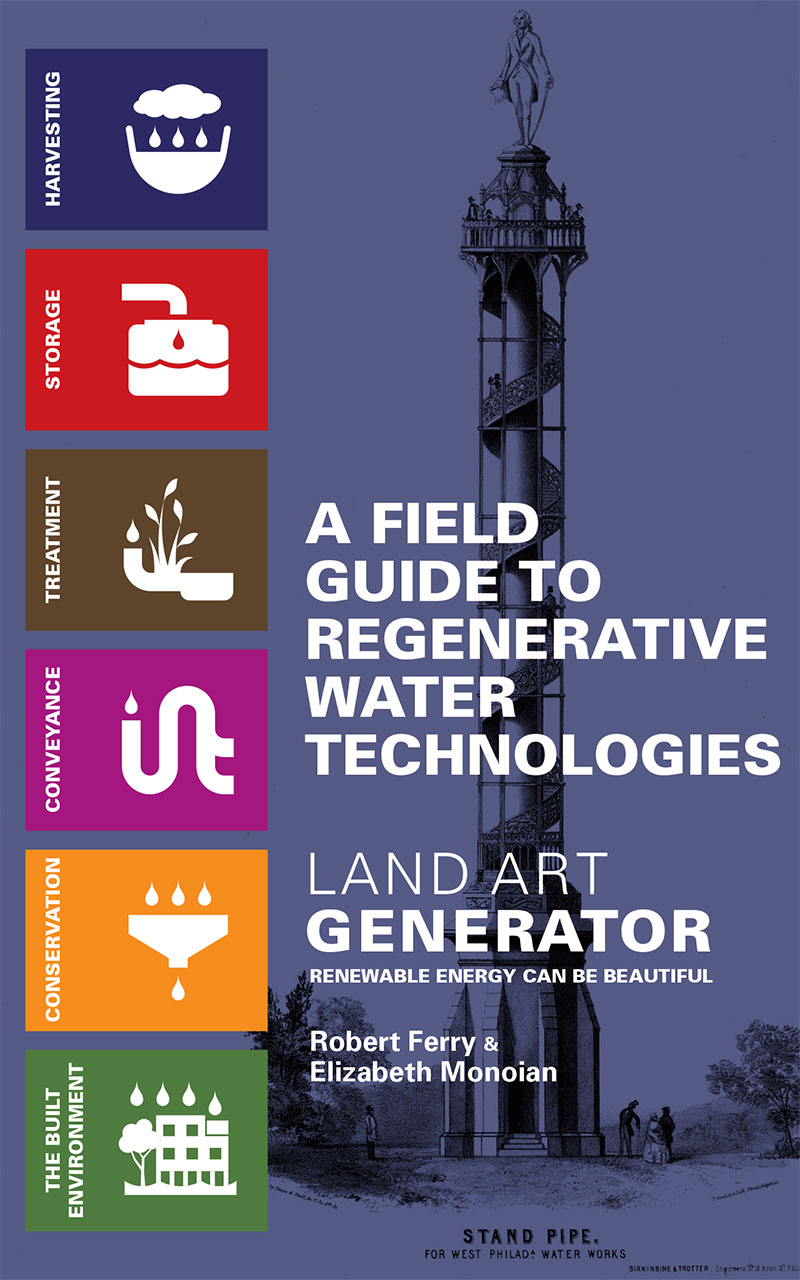
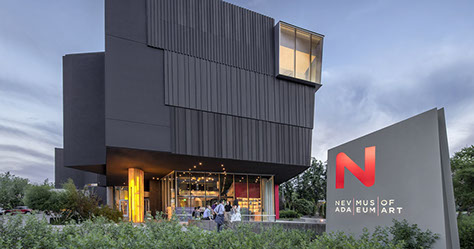

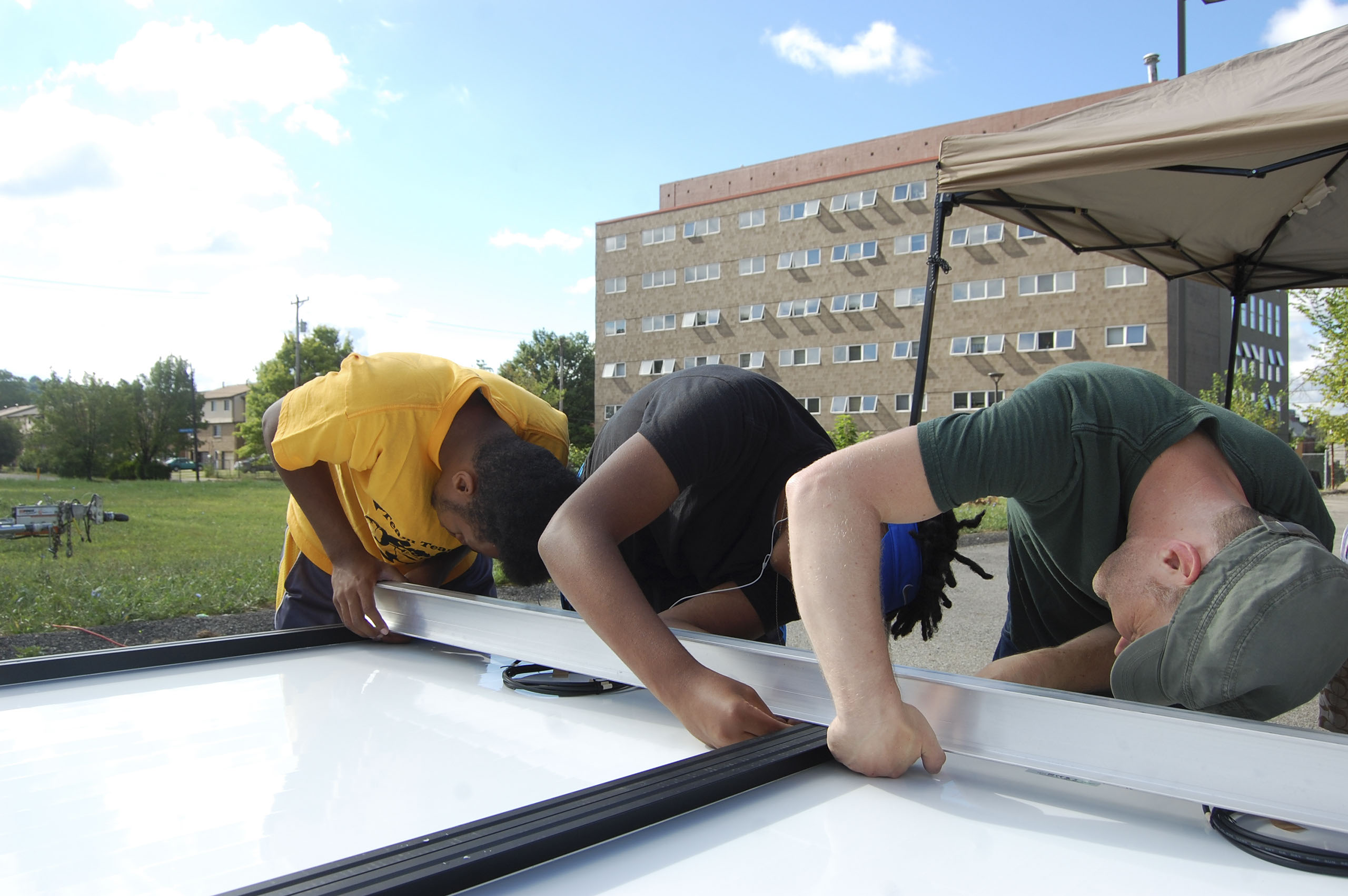
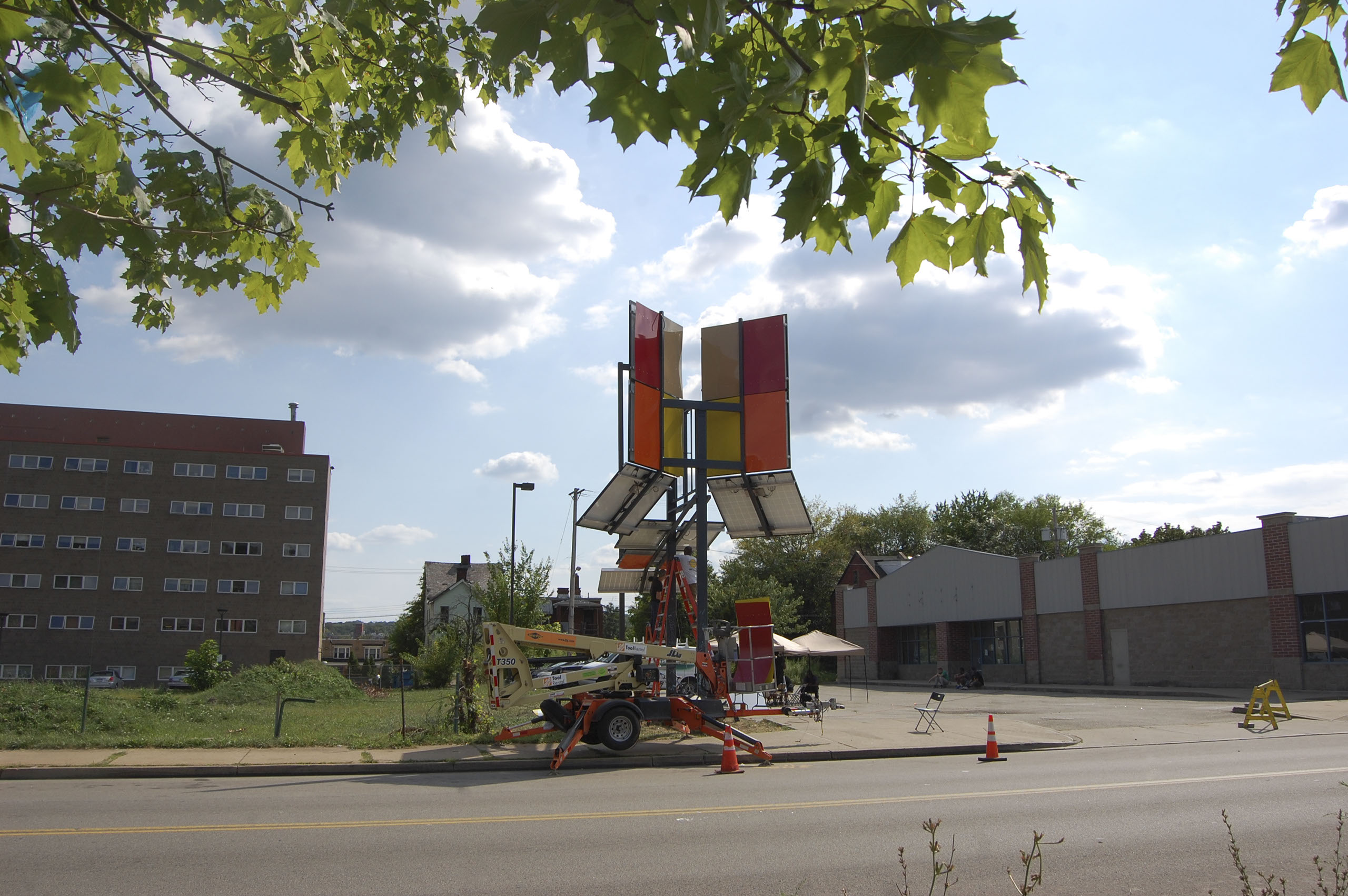


















Beyond the Wave, a submission to LAGI 2014 Copenhagen
Jaesik Lim, Ahyoung Lee, Sunpil Choi, Dohyoung Kim, Hoeyoung Jung, Jaeyeol Kim, Hansaem Kim (Heerim Architects & Planners)
Energy Technologies: organic thin film
Annual Capacity: 4,229 MWh
Light Sanctuary, a submission to LAGI 2010 Dubai/Abu Dhabi
Martina Decker and Peter Yeadon
Energy Technologies: organic thin film
Annual Capacity: 4,500 MWh
Solar Hourglass, 1st Place Winner LAGI 2014 Copenhagen
Santiago Muros Cortés
Energy Technologies: concentrated solar power (thermal beam-down tower with heliostats)
Annual Capacity: 7,500 MWh
Arch of Time is a Land Art Generator artwork designed by Riccardo Mariano. Incorporating solar photovoltaic modules it will generate 400,000 kWh per year, offsetting the electricity demand of the surrounding city. The artwork makes for an exceptional venue for events, learning, discovery, and play. As a time measuring device, the Arch keeps track of the sun as it moves across the sky, engaging visitors with a magical light display within a comfortably shaded outdoor space. Originally a submission to LAGI 2019 Abu Dhabi. Learn more.
Solar Eco System, a submission to LAGI 2010 Dubai/Abu Dhabi
Antonio Maccà, Flavio Masi
Energy Technologies: photovoltaic panels
Annual Capacity: 1,000 MWh
Maasai Solar
The LAGI, Idia'Dega, Maasai Community partnership is bringing aesthetically and culturally relevant renewable energy infrastructure
to the Maasai community in Olorgesailie Kenya. The Maasai women who have been working closely with Tereneh Mosley and Idia'Dega:
Elegant Ethical Apparel — A Global Eco-Design Collaboration have taken the lead in designing creative installations that have the
added benefit of generating clean and renewable energy for their community. Learn more here >
Art+Energy Camp, Summer 2015, Pittsburgh
This unique six-week summer (2015) camp in the Homewood neighborhood of
Pittsburgh gave 20 kids an education in energy science, climate science, art, design,
and solar power installation. The final outcome was a built solar artwork—Renaissance
Gate—designed by the campers!
Windstalk, a submission to LAGI 2010 Dubai/Abu Dhabi
Darío Núñez Ameni and Thomas Siegl, with Atelier dna
Energy Technologies: piezoelectric discs, linear alternator
Annual Capacity: 20,000 MWh
Art+Energy Flash Cards being used during a LAGI workshop.
The Land Art Generator Initiative Art + Energy Flash Cards are designed to strengthen the pragmatic problem
solving skills needed to address solutions for 21st century energy challenges by offering an engaging tool
for science education. They highlight real world applications of STEAM objectives and teach about the
importance of sustainability in design.
You can download your free Flash Cards here. >
LAGI Glasgow
The consortium including Glasgow City Council, Scottish Canals, and BIGG Regeneration supported by ecoartscotland has brought together
overseas and Glasgow-based teams to research and develop site-specific LAGI artwork concept proposals for Port Dundas.
More about LAGI Glasgow Here >
WindNest: Pittsburgh Powered by Art
Energy Duck, a submission to LAGI 2014 Copenhagen
Hareth Pochee, Adam Khan, Louis Leger, Patrick Fryer
Energy Technologies: photovoltaic panels, hydraulic turbines
Annual Capacity: 400 MWh
Fresh Hills, 2nd Place Winner LAGI 2012 NYC (Freshkills Park)
Matthew Rosenberg; Structural Engineering Consultant: Matt Melnyk; Production Assistants: Emmy Maruta, Robbie Eleazer
Energy Technologies: WindTamerTM, Carbon Dioxide Scrubber, SmartWrapTM
Annual Capacity: 238 MWh
The Land Art Generator Field Guide to Regenerative Water Technologies is available for free download. It is a companion guide to the Land Art
Generator Field Guide to Renewable Energy Technologies and we recommend that they be used together to arrive at beautiful hybrid systems
that use energy and water technologies as media for creative expression and placemaking for people.
The Center for Art + Environment at the Nevada Museum of Art collects the archives of our organization. If you would like to research the Land Art
Generator please contact the Museum.
Yggdrasil by Man Kit Cheung, Solomon Cheung, Lai Ho Yin, and Julio Lai incorporates solar photovoltaic and kinetic energy paving to generate
120 MWh each year. The artwork provides additional social co-benefits of including food production and shaded gathering space. A shortlisted entry
to LAGI 2022 Mannheim in partnership with BUGA 23.
Art+Energy Camp, Summer 2015, Pittsburgh
This unique six-week summer (2015) camp in the Homewood neighborhood of
Pittsburgh gave 20 kids an education in energy science, climate science, art, design,
and solar power installation. The final outcome was a built solar artwork—Renaissance
Gate—designed by the campers!
Art+Energy Camp, Summer 2015, Pittsburgh
This unique six-week summer (2015) camp in the Homewood neighborhood of
Pittsburgh gave 20 kids an education in energy science, climate science, art, design,
and solar power installation. The final outcome was a built solar artwork—Renaissance
Gate—designed by the campers!
<
>
The goal of the Land Art Generator is to accelerate the transition to a post-carbon world by providing exemplary models of renewable energy infrastructures that engage communities in their creation, add value to public space, inspire, and educate.
Land Art Generator has five main areas of focus
Design competitions and participatory design
LAGI design competitions bring forward innovations in sustainable design that capture the imagination of the world. Land Art Generator co-design projects and Solar Mural installations demonstrate the benefit of applying best practices of creative placemaking, community co-design, urban planning, and civic art to renewable energy projects.
Education, outreach, and publications
The innovative and artful applications of sustainable technologies can spark the imaginations of young people and trigger curiosity in science, technology, engineering, and math. Land Art Generator educational programming is a great example of STEM-to-STEAM and project-based learning. Participants in LAGI educational programs show applied understanding of concepts like energy conversion efficiency, capacity factor, and become familiar with using kilowatt-hours. At the same time they are applying knowledge of form, shape, color, and composition while learning concepts of urban planning and whole systems design. These are exactly the kind of skills that researchers tell us will be important for jobs in the twenty-first century.
Construction
Carrying LAGI projects forward from concept to detailed design and implementation is one of the core missions of the Land Art Generator. The Arch of Time is advancing a submission to the LAGI 2019 Abu Dhabi design competition by Riccardo Mariano that was chosen by the City of Houston through a competitive process.
Research, policy innovation, and communication of emerging clean technologies
LAGI Directors contribute to publications such as the Routledge Handbook of Energy Transitions and Issues in Science and Technology, challenging policymakers and energy developers to better engage communities in the design and deployment of new energy landscapes.
Consulting
The Land Art Generator participates on consultant teams for projects seeking to maximize onsite renewables in ways that also enhance design and activate public spaces.
The Land Art Generator helps design places for people that share land use with distributed renewable energy generation. Works of art in civic space distribute clean energy and provide other sustainable services to buildings and the utility grid while beautifying the built environment.
Presenting the power plant as public artwork — simultaneously enhancing the environment, increasing livability, providing a venue for learning, and stimulating local economic development — is a way to address a variety of issues from the perspective of the ecologically concerned artist and designer. By nature of its functional utility, the work also sets itself into many other overlapping disciplines from architecture and urban design to mechanical engineering and environmental science. This interdisciplinary result has the effect of both enhancing the level of innovation and broadening the audience for the work.
Selected Essays
Land Art as Climate Action (2022)
Robert Ferry & Elizabeth Monoian
Land Art Generator Founding Co-Directors
Land Art of the 21st Century (2020)
Robert Ferry & Elizabeth Monoian
Land Art Generator Founding Co-Directors
Robert Ferry & Elizabeth Monoian
Land Art Generator Founding Co-Directors
Civic Art for a Circular Economy (2018)
Robert Ferry & Elizabeth Monoian
Land Art Generator Founding Co-Directors
Powering Places (2016)
Robert Ferry & Elizabeth Monoian
Land Art Generator Founding Co-Directors
Robert Ferry & Elizabeth Monoian
Land Art Generator Founding Co-Directors
Regenerative Infrastructures (2012)
Robert Ferry & Elizabeth Monoian
Land Art Generator Founding Co-Directors
Public Art of the Sustainable City (2010)
Robert Ferry & Elizabeth Monoian
Land Art Generator Founding Co-Directors
